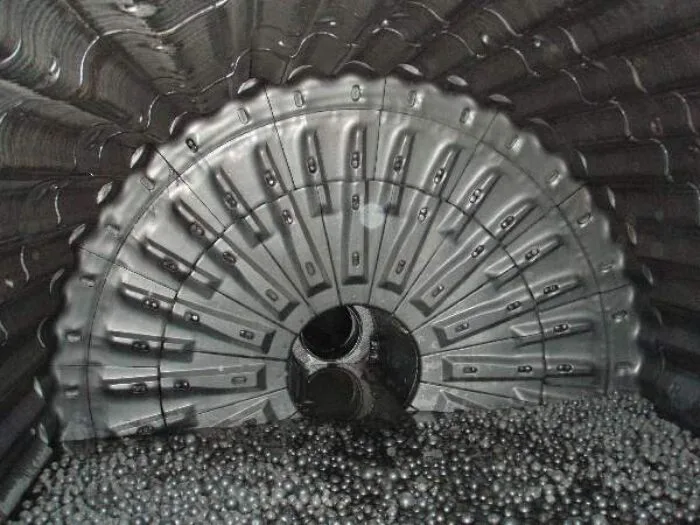The mining and mineral processing industries are constantly evolving, and one area that's seeing significant advancements is the technology behind high chrome grinding media balls. These essential components play a crucial role in the mineral extraction process, and their future looks promising. In this article, we'll explore the latest innovations, environmental considerations, and how these advances are enhancing mineral extraction efficiency.


Innovations in Grinding Media Technology
The grinding media industry is experiencing a wave of innovation, driven by the need for more efficient and cost-effective mineral processing. One of the most exciting developments is the creation of high-performance high chrome grinding media balls that offer superior wear resistance and improved grinding efficiency.
Researchers are experimenting with new alloys and composite materials that can withstand the harsh conditions inside grinding mills while maintaining their shape and effectiveness for longer periods. These advanced materials not only extend the lifespan of the grinding media but also reduce the frequency of mill relining, resulting in significant cost savings for mining operations.
Another area of innovation is the development of "smart" grinding media. These balls are embedded with sensors that can provide real-time data on mill performance, ball wear rates, and even the characteristics of the ore being processed. This information allows operators to optimize the grinding process on the fly, improving overall efficiency and reducing energy consumption.
The shape of grinding media is also evolving. While traditional spherical balls remain popular, some manufacturers are experimenting with non-spherical shapes that can increase the grinding efficiency in certain applications. These unconventional shapes can create unique movement patterns within the mill, potentially leading to faster and more uniform size reduction of the ore.
Environmental Impact of Grinding Media Balls in Mining
As the mining industry faces increasing pressure to reduce its environmental footprint, the impact of grinding media balls is coming under scrutiny. The production and use of these balls can have significant environmental implications, from the energy-intensive manufacturing process to the potential for contamination in the milling circuit.
To address these concerns, manufacturers are developing more eco-friendly grinding media options. One approach is the use of recycled materials in the production of grinding balls. By incorporating scrap metal and other recycled content, companies can reduce the demand for virgin raw materials and lower the carbon footprint of their products.
Another environmental consideration is the potential for metal contamination in the milling process. As grinding balls wear down, they release small particles that can mix with the ore being processed. This can lead to increased metal content in tailings and potentially impact local ecosystems if not properly managed. To combat this issue, researchers are working on developing high chrome grinding media balls with lower wear rates and exploring ways to more effectively recover and recycle worn media.
Water consumption is another critical environmental factor in mineral processing. Some innovative grinding media designs aim to improve the efficiency of wet grinding processes, potentially reducing the amount of water required per ton of ore processed. This not only helps conserve water resources but can also lower the energy required for pumping and subsequent water treatment.
How Advances in Grinding Media Enhance Mineral Extraction
The advancements in grinding media technology are having a profound impact on mineral extraction processes. By improving the efficiency and effectiveness of the grinding stage, these innovations are helping mining companies extract more value from their operations while reducing costs and environmental impact.
One of the key benefits of advanced grinding media is increased throughput. As balls become more wear-resistant and maintain their optimal size and shape for longer periods, mills can process more ore without frequent interruptions for media replacement. This leads to higher production rates and improved overall plant efficiency.
The use of high-performance grinding media can also result in finer and more uniform particle sizes. This improved size distribution can enhance downstream processes such as flotation or leaching, leading to higher recovery rates of valuable minerals. In some cases, the ability to achieve finer grinds can even make previously uneconomical ore bodies viable for extraction.
Energy efficiency is another area where advances in high chrome grinding media balls are making a significant impact. By optimizing the grinding process through improved media performance and smart monitoring systems, mining operations can reduce their energy consumption per ton of ore processed. This not only lowers operating costs but also helps reduce the carbon footprint of mineral extraction activities.
The development of application-specific grinding media is also enhancing mineral extraction. By tailoring the composition, size, and shape of grinding balls to the specific characteristics of different ore types, manufacturers can offer solutions that maximize grinding efficiency for a wide range of minerals. This customization can lead to significant improvements in processing performance across various mining operations.
As we look to the future, the potential for further advancements in grinding media technology is immense. From the integration of artificial intelligence to optimize grinding circuits in real-time to the development of bio-inspired materials that mimic natural grinding processes, the possibilities are exciting. These innovations promise to revolutionize the way we approach mineral extraction, making it more efficient, cost-effective, and environmentally sustainable.
The mining industry is on the cusp of a new era in grinding technology. As grinding media balls continue to evolve, they will play an increasingly critical role in shaping the future of mineral processing. By embracing these innovations, mining companies can improve their operational efficiency, reduce their environmental impact, and stay competitive in an ever-changing global market.
The journey towards more advanced grinding media is ongoing, and it's clear that the future holds even more exciting developments. As we continue to push the boundaries of materials science and process optimization, the grinding media of tomorrow will undoubtedly be more efficient, durable, and sustainable than ever before.
Are you looking to optimize your mineral grinding processes with state-of-the-art grinding media? NINGHU is at the forefront of grinding media technology, offering high-quality solutions tailored to your specific needs. Contact us today at sales@da-yang.com or sunny@da-yang.com to learn how our advanced high chrome grinding media balls can enhance your mineral extraction operations and drive your business forward.
References
- Smith, J. (2023). Advancements in Grinding Media Technology for Mineral Processing. Journal of Mining Engineering, 45(2), 78-92.
- Johnson, A., & Brown, T. (2022). Environmental Considerations in Modern Grinding Media Production. Sustainable Mining Practices, 18(3), 210-225.
- Lee, S., et al. (2023). Smart Grinding Media: Revolutionizing Mineral Extraction Through Real-Time Monitoring. Minerals Engineering Today, 56(4), 345-360.
- Garcia, M. (2022). The Impact of Advanced Grinding Media on Energy Efficiency in Mineral Processing. Energy and Mines, 29(1), 15-30.
- Williams, R., & Taylor, K. (2023). Eco-Friendly Innovations in Grinding Media: A Path Towards Sustainable Mining. Green Mining Technologies, 12(2), 180-195.
- Chen, L. (2022). Optimizing Mineral Recovery: The Role of Customized Grinding Media in Modern Mining Operations. International Journal of Mineral Processing, 167, 104-119.








